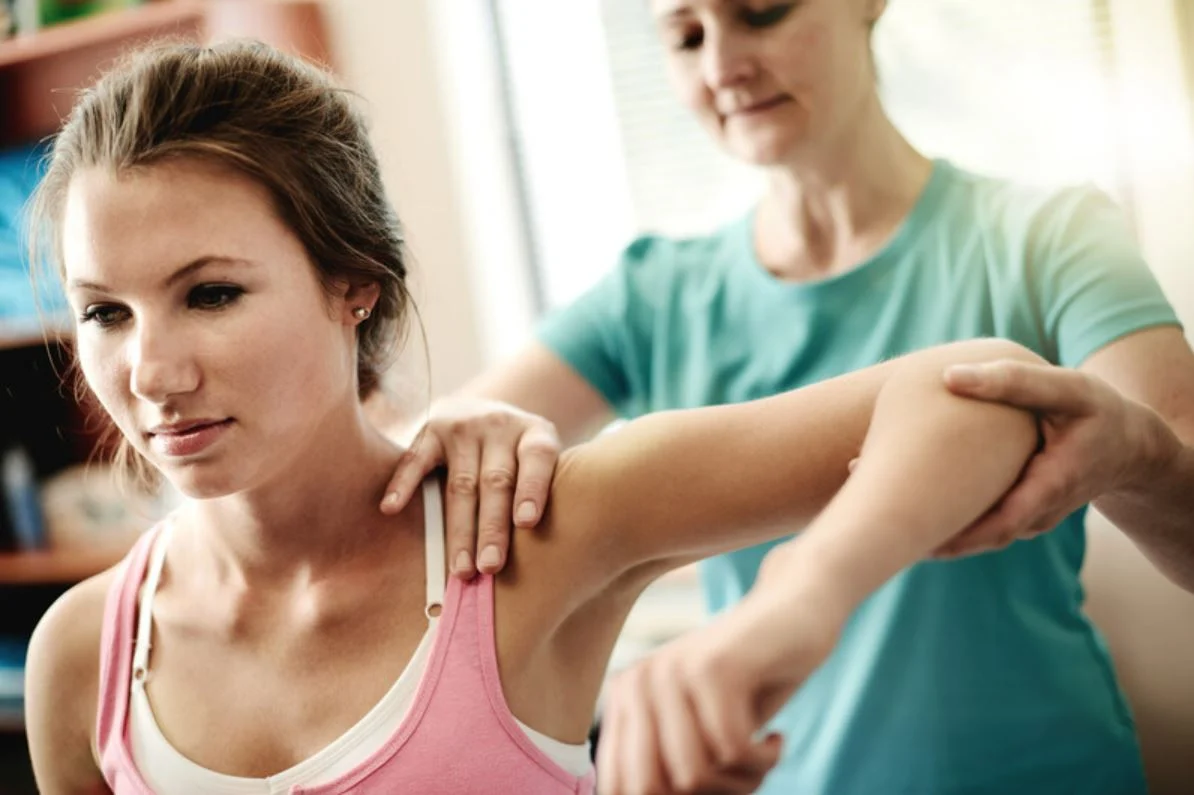Joint pain can occur anytime throughout the year but can feel worse and harder to cope with during the cold and wet winter months.
Bethany Tomlinson, musculoskeletal clinical service manager, explores what the potential causes of winter aches and pain can be, and offers her top tips for how to help ease the symptoms and keep your joints moving.
Some common causes of winter aches and pains
When we are cold our body restricts how much blood it sends around extremities, like our hands and feet, so that it can focus on supplying vital organs, like the heart and lungs. This makes the soft tissues around the joints less pliable, so joints can feel tight, stiff and uncomfortable.
There are, however, certain conditions that can be the cause of joint pain which in some instances have symptoms that are made worse during winter months.
Osteoarthritis
The most common type of arthritis in the UK is osteoarthritis.1 It can occur in any joint, for example shoulders, knees or your hands, but as it can take a long time to develop, there is time to be proactive.
It involves the loss of cartilage, the protective surface over the end of the bone, so that joints become swollen and painful.
The most effective approach to managing symptoms focuses on self-management. This means doing what you can to preserve function and mobility of joints, like regular exercise, controlling body weight and treating injuries as and when they occur.
A controlled exercise programme can help to control symptoms. A physiotherapist may offer mobilisation and stretching exercises, as well as tips for pain relief, such as putting ice on the joint if it flares up, to help bring down any swelling.
>Read more on the self-help tips that can help manage symptoms
Rheumatoid arthritis
This occurs when your body’s immune system attacks the joints – usually in the hands, wrists and feet. The joints and inflamed tissues then become stiff, painful and swollen.
People with rheumatoid arthritis may experience flare-ups, when symptoms get worse; they may also experience more general symptoms such as tiredness or weight loss.
If left untreated rheumatoid arthritis can lead serious complications, including an increased risk of heart attacks and strokes, as well as joint damage, so it’s important get an early diagnosis.
Reactive arthritis
Some people may get reactive arthritis after catching a sexually transmitted infection (STI), or a viral infection such as the flu or food poisoning. This is less common and usually clears up on its own, but can last for months.
With reactive arthritis, symptoms usually affect joints in the legs – from the hips down to the toes. It can also infect the genital tract causing discharge and pain when urinating, and the eyes causing pain, redness and discharge.
If vision becomes blurred you should seek immediate medical attention.
Raynaud’s Phenomenon
Another condition that can flare up in cold weather is Raynaud’s Phenomenon, a common condition in which the blood vessels under your skin go into a temporary spasm in reaction to the cold, cutting off normal blood flow. This is not a joint problem, but it affects the fingers and toes often making them painful.
Other symptoms of Raynaud’s include:
- numbness,
- pins and needles,
- difficulty moving the affected area; your fingers and toes may also change colour.
There are things you can do to help manage the symptoms of Raynaud’s, including a prescription medication which can help with circulation.
Low levels of vitamin D during the winter
Vitamin D helps our bodies absorb and use calcium and phosphate from our diet, minerals which are important for healthy bones, teeth and muscles.
Vitamin D is synthesised in the skin as a result of UVB exposure from sunlight. It is also found in small quantities in certain foods, including:
- oily fish (e.g., herring, salmon, mackerel, and sardines),
- liver,
- egg yolks,
- wild mushrooms,
- and some fortified products such as cereals, spreads, milk and milk substitutes,
however, it’s unlikely you could get enough from diet alone.
Vitamin D is important for bone healthy and muscles function. A low level of vitamin D can result in joint and muscular pain. As the strength of the sunlight reaching us weakens from October to March, the NHS advice is to take 10mcg of Vitamin D per day.2
>Find out more about this important vitamin and how to spot the symptoms of vitamin D deficiency
Tips for dealing with aches and pains
There are various things however, we can do to help keep our joints mobile and muscles strong, which can help reduce pain during the colder months:
1) Don’t let cold weather put you off normal physical activities
Wrap up warm (hat, gloves, scarf etc.) and wear appropriate footwear to prevent you from slipping if it’s wet or icy. It’s a good idea to wear layers in cold weather, so that you can peel them off as you warm up.
So, head on out for your usual dog walk, go to your regular class at the gym or meet up with some friends for a coffee.
2) If you’re new to exercise, don’t overdo it
Slowly build the amount you do. If you can't manage 30 minutes break it up into 10-minute chunks. Make sure you warm up with a spot of fast walking or gentle jogging.
3) Whatever activity you choose, remember good posture
Every activity can be done differently, so think about which positions put the least strain on your joints. For example, reaching to lift a heavy object from a high cupboard puts more strain on your shoulder than if you used a step or ladder.
4) Pain isn’t just a physical sensation, it can have emotional effects too
Pain often makes us feel upset and tired. And if it stops us getting out and about it can make us feel lonely and isolated too. Some people may already feel low during the winter months (Seasonal Affective Disorder), so pain can further exacerbate a low mood.
5) Sleep
Make sure to get a good night’s rest. It may sound obvious, but not only can sleep help us recharge it also releases proteins and infection-fighting antibodies to help combat inflammation and infections.
And for those with minor muscle injuries – as we sleep we’re generally using less energy, meaning what we would normally use during the day can instead be sent to restoring bones and muscles through growth hormones, which are produced during sleep.
If you feel that you’re not coping with pain or your mood, then reach out to your GP for some help.
References















